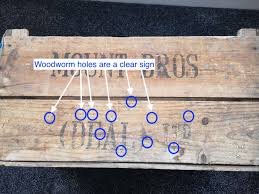“Click here” – two simple words that have become a guiding phrase in the digital world. Whether it appears on a website, a newsletter, or an app interface, “Click here” serves as the bridge between users and the digital actions they are about to take. Though seemingly straightforward, this call to action (CTA) has sparked debates about its effectiveness, relevance, and best practices.
This blog looks closely at the role of “Click here” in modern digital communication. We’ll explore its significance, discuss strategic use cases, and uncover how these words can make or break user interaction. If you’re looking for practical insights on perfecting your digital CTAs, keep reading.
What Makes “Click Here” Effective
Before we analyze when and how to use “Click here,” it’s important to understand why it works. Its effectiveness lies in its simplicity and universality, allowing it to fit into almost any digital context.
A Clear Call to Action
“Click here” eliminates confusion. It tells users exactly what to do next and leaves no room for ambiguity. For example, an ecommerce website might use this CTA to guide customers seamlessly through the purchasing process. Rather than overwhelming the user with jargon, this concise prompt takes them to their destination without added mental effort.
Additionally, the familiarity of “Click here” has psychological benefits. For users who aren’t tech-savvy, its straightforward nature offers clarity and reduces hesitation. It directs action immediately and effectively, especially for tasks such as accessing a resource or navigating to another page.
Universality Across Audiences
One major advantage of “Click here” is its universal appeal. This CTA works with both experienced web users and newcomers unfamiliar with technical terminology. Whether guiding someone to “Click here” to book a service or take them to an instructional video, this approach transcends user expertise and technical skill levels.
It’s easy to forget that accessibility plays a crucial role in digital design. A CTA that’s easy to understand and recognize—like “Click here”—ensures inclusivity in user engagement strategies.
The Best Situations to Use “Click Here”
While “Click here” is immensely versatile, there are scenarios where it truly shines. Its simple directive is most effective when context, placement, and purpose align.
For Quickly Grabbing Attention
When your goal is to prompt immediate action, such as subscribing to a mailing list or redeeming an offer, “Click here” works perfectly. Pairing it with compelling copy like “Click here to save 20% now” provides clear motivation and reduces barriers to engagement. It signals urgency without overwhelming users, providing a direct path to the next step.
Similarly, in email campaigns or social media posts, where brevity is key, “Click here” can effectively drive conversions. These environments don’t allow for lengthy explanations, so keeping it simple ensures your audience engages effortlessly.
When Context is Already Clear
“Click here” works best when users already understand the link’s purpose through surrounding context. For example, imagine a paragraph talking about premium glass designs that ends with “Discover how custom glass can transform your space—Click here to learn more.”
Here, the link placement and nearby description ensure the user knows exactly what they’ll find after clicking, while the CTA itself provides a direct invitation to act.
Common Mistakes with “Click Here”
For all its simplicity and utility, “Click here” can lose its effectiveness when improperly executed. To avoid undercutting your engagement efforts, steer clear of the following pitfalls.
Overuse
Though helpful, overusing “Click here” across a single webpage or campaign can dilute its impact. Imagine encountering a webpage where almost every hyperlink says “Click here.” Users might quickly grow frustrated since it becomes hard to distinguish one link’s purpose from another.
To prevent this, alternate between “Click here” and descriptive CTAs. For example, while “Click here to learn about advanced techniques” can work well in one instance, other links could more specifically state, “Learn about advanced techniques here.” Mixing up phrasing ensures user engagement remains high.
Lack of Context
Context is king when implementing “Click here.” Without adequate context, users may hesitate to interact with the link, unsure where it will lead or what it will provide. For example, a lone hyperlink reading “Click here” might seem arbitrary if disconnected from meaningful content.
To avoid confusion, surround your CTA with explanatory content. For example, when designing a lead-generation form, brief text like “Interested in learning more? Click here to get started” adds context and inspires confidence.
Enhancing “Click Here” Links for Better Engagement
Now that you know the dos and don’ts of “Click here,” it’s time to explore ways to elevate its effectiveness. Successful implementation comes down to good placement, intuitive formatting, and thoughtful design elements.
Placement and Accessibility
Strategic placement is key. Situate your “Click here” link near content that naturally motivates action, whether it’s a paragraph summarizing a service or a bold statement that sparks curiosity. For example, an online portfolio might end with “Want to see my latest designs? Click here to explore!”
Also, consider accessibility. Visually impaired users rely on screen readers to interpret online content. By pairing “Click here” with nearby text that provides additional detail, you improve usability for all audiences.
Visual Clarity
Don’t underestimate the power of design. Highlight your “Click here” links with colors, bold fonts, or underlines to ensure visibility without overwhelming the user experience. When appropriate, use buttons for a more modern, visually appealing alternative.
Remember that overcrowding your page with CTAs can lead to confusion. Consider limiting “Click here” CTAs to one or two per section, creating focus instead of chaos.
The Future of “Click Here” in Digital Strategy
Despite the growing sophistication of user interfaces, “Click here” remains a timeless tool in engaging users. Its adaptability ensures it plays a role across various touchpoints, from guiding digital novices to streamlining professional interactions.
With that said, the future likely holds incremental innovations. Modern trends like voice commands and gesture-based navigation may occasionally reduce reliance on visual CTAs, but written instructions like “Click here” won’t likely disappear anytime soon. Instead, it will coexist with emerging technologies as part of a comprehensive engagement strategy.
For anyone designing digital experiences, mastering the balance between simplicity, clarity, and creativity will remain vital. Thoughtful implementation of “Click here” can be the difference between merely presenting information and successfully inspiring action.
Final Thoughts
If you’re looking for a reliable, effective way to inspire immediate action, don’t underestimate the power of “Click here.” When aligned with clear context, visually appealing formatting, and smart placement, this modest CTA becomes a powerful engagement driver.
For examples of how impactful a well-placed “Click here” can be in action, explore its use on projects like Click here, a prime example of creating effortless user navigation.
Test it, refine it, and keep experimenting for the best results. With a thoughtful approach, these two small words can lead to major outcomes in your digital goals.






